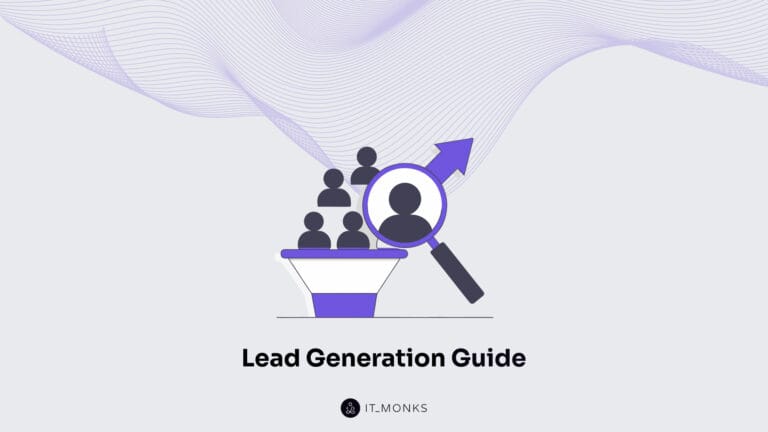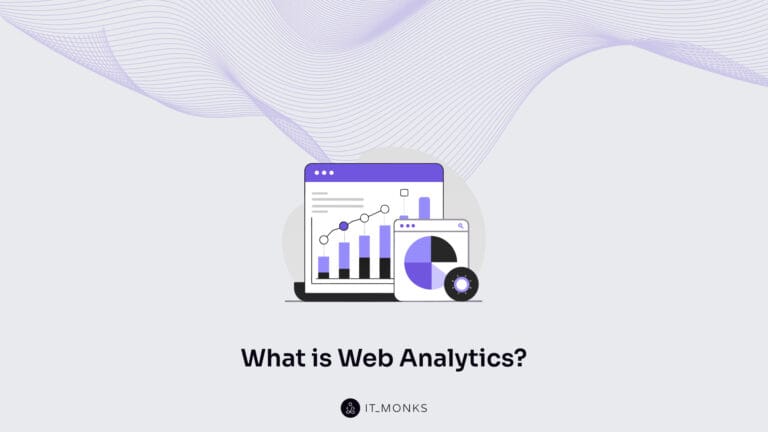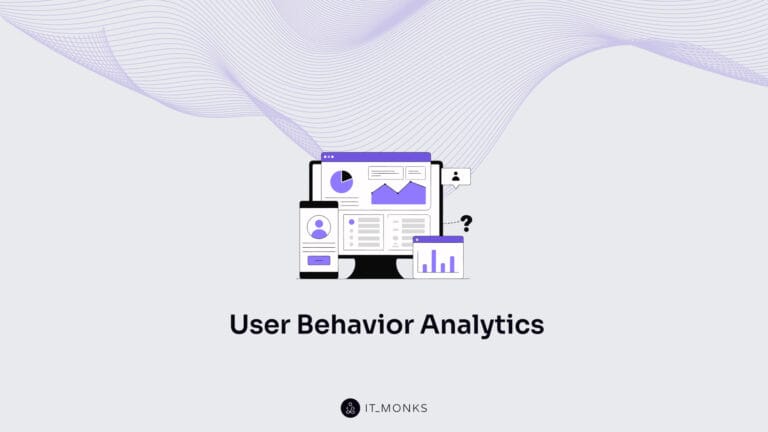Digital Transformation for the Enterprise
Table of Contents
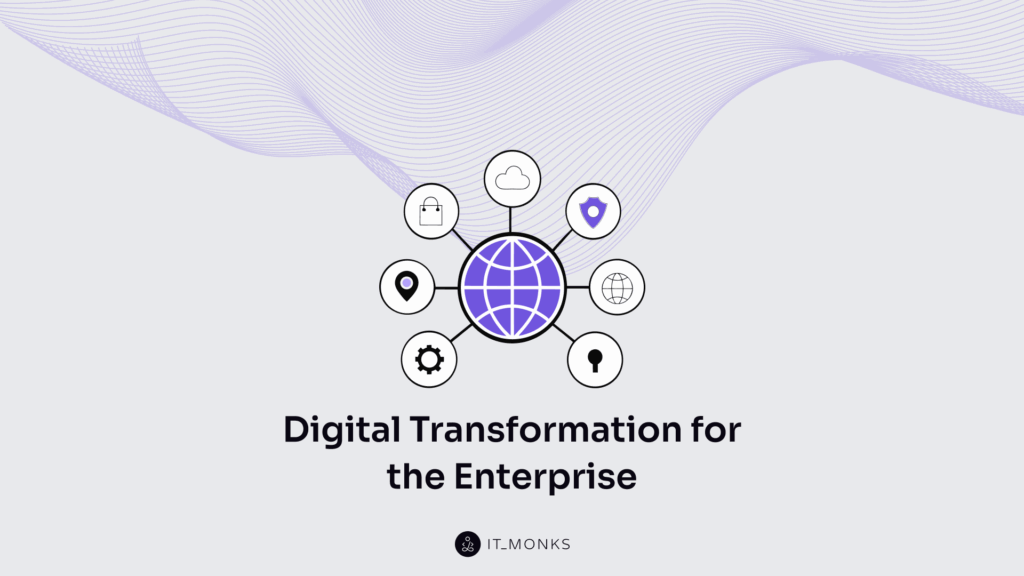
Digital transformation redefines how enterprise systems structure operations, coordinate delivery models, and orchestrate value delivery. It is not a surface-level enhancement of tools but a strategic re-architecture of internal and external business functions, spanning platforms, protocols, and experience frameworks. This evolution governs not just what the enterprise delivers, but how its systems interoperate, update, and respond to dynamic operational contexts.
The enterprise website becomes the most exposed layer of this transformation, interfacing with users while synchronizing with core business logic. As both the interaction surface and integration layer, it reflects the maturity of modular system design and the extent of internal orchestration. Through it, experience delivery, real-time operations, and system-wide coordination are not merely represented — they are executed.
Platform evolution underpins this shift. Digital transformation leverages modular architectures, composable content systems, and structured data pipelines to sustain adaptable and scalable operations. Integration patterns — via APIs, headless content strategies, and unified governance models — extend the reach of the enterprise website from an isolated digital front to a synchronized performance layer of the enterprise system.
This is not a static upgrade but a continuous operational evolution. Transformation progresses through governed iteration, system modularity, and platform strategy. Enterprise content platforms, integration boundaries, and delivery workflows function as orchestrated components of an operational architecture that is built to evolve.
What Is Digital Transformation in the Enterprise?
Digital transformation is a systemic realignment of enterprise operations and service models, executed through platform modernization, data orchestration, and modular service delivery to support scalable experience delivery, integrated processes, and strategic agility.
The enterprise becomes the locus of structural change, where operational layers, data architecture, and platform systems are governed under a unified transformation architecture. This shift is not about user interface adjustments or the deployment of individual digital tools; it is an operational restructuring that redefines how services are delivered, how systems are composed, and how internal and external components interact.
Enterprise operations are restructured around modularity, platform-first logic, and governed system boundaries. The transformation repositions functional domains — content systems, process automation engines, CRM, ERP, and identity management layers — into coordinated, governed, and measurable structures. Systems and platforms evolve from isolated utilities into interoperable assets, where architecture decisions are driven by composability, extensibility, and service alignment.
Enterprise architecture undergoes layered evolution. Experience interfaces, operational platforms, and data pipelines are abstracted into decoupled services, where transformation is measured by adaptability. The architectural shift governs how platforms such as CMS, DXP, CRM, ERP, and CDP interconnect and coordinate through middleware, identity frameworks, and structured data flow.
Systems and platforms within a transformed enterprise operate under centralized orchestration logic and federated governance. Changes are tracked, measured, and optimized, not deployed reactively. This is transformation by design: platform consolidation, experience unification, and controlled scalability.
The enterprise website functions as both a mirror and an interface of this transformation—an orchestration point where service delivery, platform integration, and operational architecture converge.
Why Transformation Often Starts with the Enterprise Website
Digital transformation at the enterprise level often begins at the website. This surface, where the organization’s operational logic meets external demand, becomes the first place where strategy is tested, pressured, and exposed. The enterprise website architecture doesn’t merely reflect change — it initiates it because that’s where delivery friction is first felt.
Enterprise stakeholders push for content velocity, real-time personalization, agility in rollout, compliance controls, and measurable performance — all of which converge on the website as the experience surface. Unlike internal systems that can adapt behind the scenes, the website is always live, always under scrutiny. That makes it the primary stress point when transformation initiatives begin.
The website surfaces the tension between the current system’s capability and future-facing demands. Content delivery tied to legacy CMS logic, personalization bottlenecked by fragmented data models, and orchestration dependent on brittle APIs all emerge here first. These issues don’t remain local — they cascade across infrastructure, exposing brittle integrations and unscalable architectures.
What starts as a requirement for personalization or cross-channel coordination quickly escalates into a need for CMS re-architecture, integration middleware, and revised governance logic. The website, positioned at the intersection of business need and technical execution, reveals where modular delivery falters, where orchestration breaks down, and where system latency obstructs velocity.
As a result, the enterprise website becomes a control surface, the mechanism through which transformation pressures are interpreted and directed into backend evolution. Every update, integration, or governance policy pushed through this layer reflects broader platform orchestration needs and performance constraints. It forces the enterprise to face its operational structure — or rebuild it.
Strategic Approaches to Digital Transformation in the Enterprise
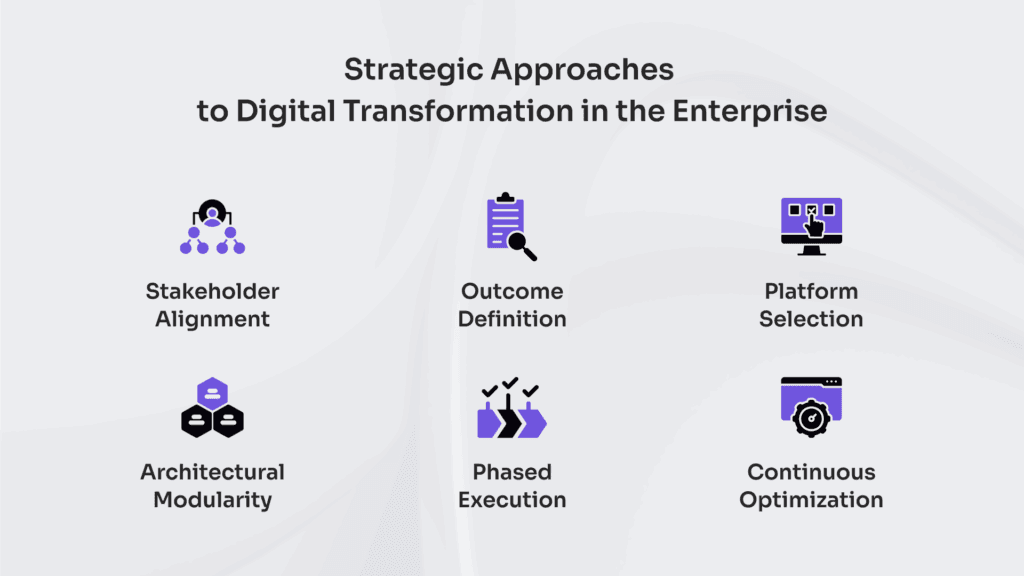
Digital transformation for the enterprise operates as a structured strategic system that reconfigures how organizational logic is executed across platforms. This transformation is a governed, system-led execution structure built on a modular architecture, platform orchestration, and phased deployment. Enterprises must move deliberately through transformation layers, with each step interlocked and governed for operational continuity and cross-system impact.
The transformation strategy unfolds through six synchronized phases: stakeholder alignment, outcome definition, platform selection, architectural modularity, phased execution, and continuous optimization. These are not discrete tasks but interdependent strategic levers that recalibrate enterprise systems toward scalable, platform-centric evolution.
By aligning strategic intent with system execution, enterprises move beyond theoretical planning and into a state of observable system performance and platform coordination. Each layer in this sequence is engineered to coordinate both human and digital elements, linking business logic with platform behavior. At its core, this model enables transformation to be governed, measured, and iterated across a live digital substrate.
Enterprise platforms and architecture structure how transformation is coordinated. From outcome modeling to execution sequencing, each strategic step functions as a node within the broader transformation framework. The role of the website — often the most interactive and data-rich asset — becomes central to this orchestration, channeling transformation across both customer-facing and operational domains.
This approach eliminates ad-hoc digital efforts in favor of observable enterprise orchestration. Transformation here is neither linear nor chaotic — it is systemic, modular, and guided by platform logic. Each phase amplifies transformation velocity without sacrificing governance. This sequencing sets the stage for what follows: targeted strategic layers that operationalize transformation inside the enterprise.
Stakeholder Alignment
Stakeholder alignment is the first strategic requirement of digital transformation at the enterprise level. It structures the conditions under which cross-functional teams operate, from marketing and product to IT, legal, and operations. This alignment governs how foundational elements like system scope, transformation objectives, platform responsibility, and execution frameworks are interpreted and enacted across the organization.
Each stakeholder role brings its own system assumptions and operational dependencies. Without alignment across those assumptions, transformation initiatives drift — platforms proliferate without ownership, architecture changes stall due to unresolved dependencies, and KPIs disconnect from actual delivery paths. Misalignment fractures transformation into isolated projects instead of coordinated outcomes.
Enterprise leadership must coordinate shared ownership around the transformation model: who owns what system component, how workflows evolve, and which governance functions apply at each stage. When these roles are aligned, platform selection, modular execution planning, and architecture modeling become structurally viable.
This alignment is a maintained governance function. It must be structured, monitored, and reinforced throughout execution to prevent rollback into siloed decision-making. Without it, even well-funded digital initiatives collapse under the weight of conflicting assumptions and undefined responsibility.
Outcome Definition
Outcome definition is the second strategic layer in enterprise transformation — the part where goals become measurable targets, and transformation is given a quantified function. In the context of digital transformation, outcomes are quantifiable changes in system behavior — performance benchmarks that translate transformation into controlled architectural shifts.
Each outcome defines a scope of operational evolution. Increased content velocity, reduced deployment friction, or enhanced data interoperability aren’t aspirations — they are transformation metrics. These markers dictate the velocity, scalability, and delivery rhythm across systems. When correctly modeled, they provide the measurement framework that governs every downstream decision, from platform alignment to modular delivery sequencing.
By defining outcomes early, transformation avoids becoming reactive or platform-driven. Outcomes constrain architectural sprawl by aligning system orchestration with functional goals. Without this constraint, enterprise-scale efforts risk fragmenting into siloed tools with no governing logic. Defined outcomes reverse that entropy; they prioritize integration scope, frame delivery metrics, and provide the observability layer needed to measure and iterate at scale.
Enterprise transformation isn’t driven by features. It’s driven by outcomes that constrain execution and expand control. A transformation without outcome modeling isn’t transformation — it’s experimentation.
Platform Selection
Platform selection is the strategic moment where the enterprise commits to the systems that will enable and execute the transformation. This platform is not a frontend toolset but a transformation substrate — the delivery architecture responsible for orchestrating content flow, system logic, and integration control.
At this stage, the transformation model begins to materialize. The platform anchors content infrastructure, constrains modular capability, and governs the interoperability mechanisms necessary for phased rollout. Enterprise-level requirements dictate that the platform supports composable systems, workflow governance, and experience orchestration at scale. Without API-first logic, governed publishing flows, and native multi-site or multi-language capacity, operational integrity begins to degrade across channels.
A headless CMS or digital experience platform becomes the enforcement layer for architectural logic previously scoped in outcome definitions. This system determines how content is structured, how users interact across touchpoints, and how internal systems communicate. Its integration APIs define the orchestration layer’s surface area, while its governance frameworks dictate who can act, how, and when.
Platform selection is a constraint model that supports enterprise coordination. Stakeholders inherit its limits, and KPIs are tracked against its boundaries. The platform enables modular deployment only if it supports decoupling at the infrastructure level. It provides experience control only if its personalization schema aligns with transformation goals. In essence, it defines what is operationally possible.
By locking platform choice to the strategic model, the transformation system is no longer conceptual — it becomes executable. The delivery architecture, now anchored, supports both the phased execution path and the long-term scalability logic necessary for continuous optimization.
Architectural Modularity
Architectural modularity is a system-level constraint that allows enterprise transformation to move fast without coupling failure. It defines the separation logic of enterprise systems by encapsulating services and isolating operational behavior, enabling independent release cycles, integration flexibility, and failure containment while supporting platform evolution, cross-team workflows, and transformation continuity.
This architectural pattern governs the enterprise system as a composite of encapsulated logic units with bounded integration surfaces. Each module contains its own execution logic, internal contracts, and state behavior, structured to abstract implementation details from the broader transformation structure.
Modularity coordinates the system’s capacity for phased execution. Platform changes, service additions, and feature evolution occur within controlled module boundaries, minimizing system-wide coupling and preserving functional autonomy. This modular decomposition permits transformation streams to unfold in parallel without coordination bottlenecks or delivery interference.
The enterprise system behaves as a distributed structure under transformation. Decentralized teams operate against well-defined module interfaces, reducing orchestration overhead and protecting core services from unintended dependency collisions. Fault isolation within bounded contexts increases system recoverability and constrains failure scope.
Architectural modularity abstracts deployment variability from operational control. Services can be independently deployed, replaced, or versioned without upstream disruption. This structural constraint supports API surface governance, platform interoperability, and the continuous evolution of service contracts.
In platform selection, modularity is not an outcome — it’s a prerequisite. The capacity to isolate system capabilities into orchestratable logic zones defines whether a platform can participate in a transformation program. Modularity anchors phased rollouts to technical feasibility, not just stakeholder ambition.
As a transformation structure, architectural modularity does not merely assist change — it constrains it. The governance surface is shaped by the module topology. Modularity clarifies responsibility, enforces consistency, and underwrites the system’s capacity to scale transformation with precision.
Phased Execution
Phased execution is the delivery logic of enterprise transformation — a controlled system for introducing change gradually, validating behavior, and minimizing system risk. Each delivery unit operates as a complete loop, released in alignment with enterprise system readiness and platform capabilities. This is a system of integrated behavior rollout governed by observability and scope control.
Transformation is orchestrated through a logic of modular sequencing, in which the architectural readiness of components — such as service interfaces, integration endpoints, or content schemas — dictates when a release can proceed. Platform readiness reinforces this logic through CMS or DXP features like access governance, publishing controls, and audit traceability. These serve as execution gates, not optional conveniences.
Release control is further determined by outcome staging: metrics and KPIs are defined upstream from the delivery anchors for each phase. Without these anchors, delivery loops become arbitrary, and system responsiveness decays. Each stage evolves from the validated behavior of the prior one, not from arbitrary prioritization or calendar pressure.
Feedback from each delivery stage loops directly into system reconfiguration and team coordination patterns. This loop governs not only how platforms are adjusted but also how cross-functional execution evolves under real-world operational data. It transforms each phase into an input for the next.
Through this model, phased execution governs transformation as a system of controlled emergence. Architectural logic, platform capacity, and behavioral telemetry converge to make strategic intent actionable without fragmenting the enterprise.
Continuous Optimization
Continuous optimization is the post-deployment logic that ensures digital transformation is not a project but a living system — one that’s constantly measured, refined, and realigned to business goals. This transformation control loop operates as a persistent calibration phase — one that validates architecture, tunes platform behavior, and aligns operations to evolving business goals.
The enterprise system is instrumented with real-time observability to expose telemetry across delivery components. Platform observability enables the reconciliation of KPI fluctuations against predefined transformation outcomes. This telemetry loop surfaces deviations in performance, orchestrates modular reconfiguration, and preserves rollout integrity without retrofitting system foundations.
Optimization spans across architectural layers: platform latency, integration reliability, content throughput, and behavioral orchestration are recalibrated based on operational signals. Modular tuning supports isolated iteration, while performance telemetry traces how release metrics impact experience delivery. Every rollout phase feeds this cycle — governance doesn’t stop at launch; it intensifies.
Experience refinement, publishing velocity, and workflow throughput are surfaced as performance dimensions under active observation. These signals inform component evolution across personalization accuracy, approval cadence, and content orchestration. KPI feedback loops allow strategic reweighting of priorities, tuning the platform in alignment with transformation intent.
Absent a structured optimization loop, transformation plateaus. Without continuous validation, operational performance drifts from architectural intent. In this context, optimization isn’t support — it’s system governance. It anchors transformation as a durable enterprise function, not a finished task.
Digital Transformation Use Cases Centered on the Website
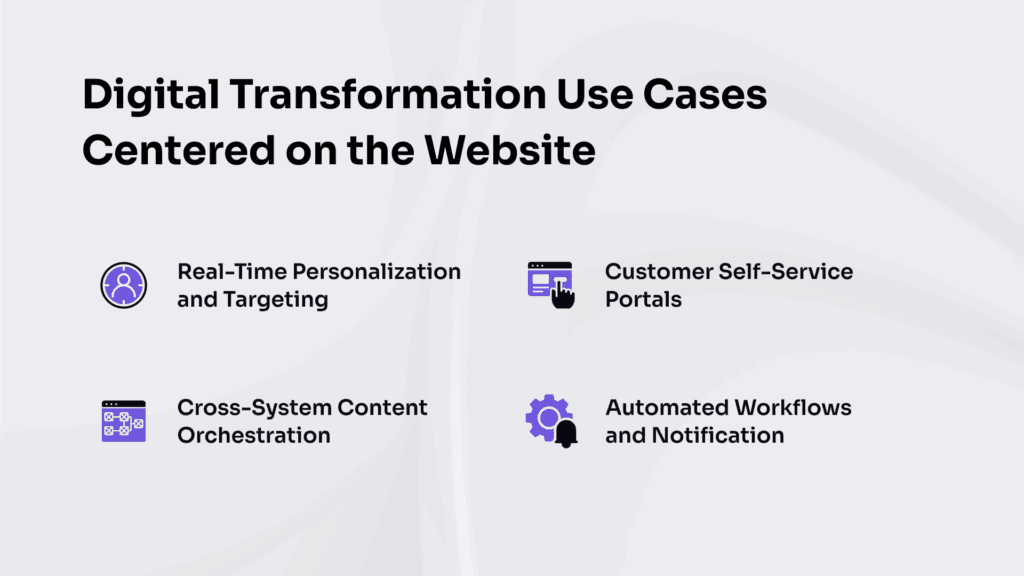
The enterprise website serves as the execution plane where digital transformation becomes operational. It consolidates modular components, system integrations, and orchestration flows into behaviors that are surfaced to internal and external users. Use cases delivered through this layer reflect coordinated logic across systems, not visual design, but functional structure.
Real-time personalization represents platform-level behavior where the site orchestrates identity resolution, event streams, and decision logic to render adaptive outputs. These responses reflect a live integration model across analytics, targeting engines, and content services — all executed within the delivery endpoint.
Self-service logic is expressed when the website coordinates access rules, data queries, and transactional inputs into structured workflows. These portals are the site’s system expression, merging permission layers and backend APIs into a unified interaction model.
Cross-system content orchestration emerges when the website channels structured data from asset repositories, product databases, or editorial tools into a synchronized display layer. It executes not content presentation but content logistics across connected platforms.
Workflow automation is delivered as triggered logic within the experience layer. Status changes, user actions, or backend events initiate coordinated sequences — routed through task engines, notification layers, and stateful interfaces — all mediated by the site’s orchestration surface.
These patterns are not features or components. They are systemic behaviors that the website executes through modular architecture and integrated logic. They convert the transformation strategy into measurable operations and define the functional scope of modern enterprise web development.
Real-Time Personalization and Targeting
Real-time personalization is a dynamic orchestration behavior delivered through the enterprise website. Through orchestrated data-layer signals, it coordinates behavioral segmentation with modular rendering logic, executing targeted content decisions on the enterprise website. This behavior is a visible confirmation that the system architecture supports runtime experience governance based on user-state signals.
At the core, this orchestration depends on real-time data capture and decisioning logic integrated across CDPs, CRMs, and analytics platforms. The platform receives identity-layer signals, resolves user context through API-powered middleware, and personalizes experiences across modular frontend components. Dynamic rendering behaviors ensure that each experience is composed in real-time, assembled from atomic content units governed by identity and behavioral context.
The personalization engine does not rely on static segmentation. Instead, it adapts to evolving user-state data, capturing live signals and routing those signals through a flexible orchestration layer. This integration layer synchronizes data exchange between decisioning logic and experience modules, rendering context-aware outputs on demand. Identity orchestration enables precise targeting, dynamically resolving anonymous, known, or transitioning user states to activate segments and content strategies accordingly.
Runtime targeting decisions span content modules, system workflows, and message logic. Whether displaying specific experiences or triggering business processes, this orchestration is coordinated through a composable framework — one that reflects architectural modularity, integration responsiveness, and scalable delivery capacity. The platform’s ability to respond to real-world signals — continuously and predictively — demonstrates the degree to which transformation has been structurally achieved.
This form of targeting emerges from platform-wide behavior. Every decision rendered is an output of identity resolution, real-time data access, and dynamic content logic. The enterprise website activates, orchestrates, and adapts, showcasing a transformation platform that is composable, behavior-aware, and API-governed by design.
Customer Self-Service Portals
A customer self-service portal is a transformation use case that converts internal business logic into externally usable, secure, and orchestrated user interfaces delivered via the website.
Instead of requesting manual support, users initiate and resolve defined actions: managing accounts, modifying payment credentials, tracking transactions, updating subscription settings, or advancing document-based workflows. These interactions are authenticated, identity-managed sessions coordinated through IAM protocols and driven by backend task execution.
The delivery mechanism depends on seamless data access orchestration. Portals retrieve and update live records from CRMs, ERPs, and related service systems through secured API calls. Underlying this process is a synchronization layer that governs how data states resolve between user inputs and enterprise truth systems. Every executed task reflects backend coordination, not passive display.
Architecturally, customer self-service requires modular frontend delivery abstracted from logic-intensive systems. CMS decoupling or dedicated portal rendering isolates the experience layer from enterprise complexity while maintaining real-time interface behavior. Identity-managed access is enforced from the first interaction, often with SSO and role-scoped permissions embedded at the IAM layer.
The model enforces platform maturity: only systems with reliable integration, workflow resolution, and contextual service exposure can externalize tasks without human fallback. As a result, operational overhead declines while usage scales. The website becomes a transactional interface, no longer an information terminal, but a composable channel for service delivery. These portals reveal transformation as user autonomy, not decorative design.
Cross-System Content Orchestration
Cross-system content orchestration is a transformation behavior in which content is no longer created, stored, or delivered in silos — but instead flows across platforms (CMS, DAM, CRM, ERP, etc.) via governed, API-enabled, and context-aware systems. It operates through modular schemas and integration logic, not editorial tools.
Content is extracted from CMS or DXP platforms, enriched with assets from DAMs, injected with CRM-driven personalization or ERP product data, and delivered to decoupled frontends. Each layer resolves content dynamically based on schema-bound APIs, not static templates.
This architecture relies on headless or hybrid CMS setups, with orchestration logic layered in between. API endpoints govern retrieval. Schemas define structure. Frontend layers bind content at runtime for each user context, channel, and format.
Orchestration replaces siloed publishing with programmable distribution. It aligns with transformation principles: composability, decoupling, and governance. The enterprise website serves as a delivery endpoint, but its surface is part of a dynamic, routed system.
Scaling real-time, omnichannel delivery demands this logic. Without it, the content remains fragmented and non-performant.
Automated Workflows and Notifications
Automated workflows and notifications are a transformation behavior in which the enterprise website becomes a trigger point and logic layer, initiating or propagating events across systems based on user interaction, content changes, or data updates. When a user interacts with content, submits data, or triggers a defined state change, the site initiates structured workflows — rule-based processes that move across systems via event schemas and API orchestration.
These workflows are modular automation contracts. Each is built to trigger from platform events and execute across decoupled services — updating CRMs, resolving IAM flags, syncing analytics, or initiating legal approvals. Execution flows rely on pub/sub mechanisms, webhooks, and observable system states that propagate change without manual input.
Notifications surface as coordinated outputs of this automation. They don’t serve as simple reminders but as system-resolved signals — structured and rule-bound — to expose the status, success, or failure of underlying processes across the tech stack.
This architecture reflects platform maturity: workflows trigger autonomously, notifications synchronize system visibility, and modular services operate as part of a broader execution fabric. The result is reduced latency, fewer operational bottlenecks, and consistent process governance across enterprise platforms.
How Website Requirements Influence Enterprise Operations
Website requirements now impose system-wide constraints that restructure enterprise operations. They are architecture-driven demands that cascade across workflows, governance models, and release structures.
Today’s enterprise website is integration-heavy and latency-bound. To support real-time behavior, modular content, and orchestration across platforms, operations shift from static processes to synchronized, architecture-aligned models. Content operations adopt governance structures that compress review cycles, align publishing with deployment cadence, and enforce versioned approval workflows.
Technical operations respond with infrastructure orchestration tuned for agile releases and rollback flexibility. Release processes are no longer fixed sequences — they’re modular flows governed by the logic of the site. As personalization and behavioral systems run live, data operations move toward real-time capture, metric-driven observability, and performance monitoring at the service level.
Compliance and legal workflows adjust as well. Approval models are modularized to support granular controls. Governance becomes embedded, not adjacent — shaped by the same requirements that define site structure and interactivity.
What begins as frontend logic reshapes the backend structure. The website defines the rhythm — driving delivery cadence, enforcing synchronization, and binding cross-functional governance into a system-led operating model. Enterprise operations are no longer separate from digital delivery — they are configured by it.
How Enterprise Architecture Evolves with Digital Transformation
Enterprise architecture is not exempt from transformation — it is redefined by it. What was once a static, layered model organized around fixed tiers — presentation, application, data, and infrastructure. These pressures don’t enhance legacy structures; they restructure them entirely.
Transformation abstracts rigid layers into composable orchestration surfaces. Static routing gives way to dynamic execution driven by user state, context, and system signals. Instead of centralized decision paths, architectures evolve into distributed, API-bound modules, each operating as autonomous logic units coordinated at runtime.
Personalization demands, schema evolution, and workflow logic anchor the architecture. Behavior moves from monolithic stacks into decoupled surfaces and service abstractions. Headless systems, API-first design, and cross-platform orchestration become essential.
Observability becomes architectural. Every execution layer must expose real-time behavior under load, feeding back into deployment and rollback patterns. Governance is no longer a fixed checkpoint — it’s integrated across modular logic paths.
Enterprise architecture doesn’t just support transformation; it performs it. Structural flexibility, system-level agility, and behavior-led execution are preconditions. As business experiences accelerate, the architecture beneath must match their pace or forfeit relevance. The systems that survive are those built to rewire themselves in motion.
Contact
Don't like forms?
Shoot us an email at [email protected]

